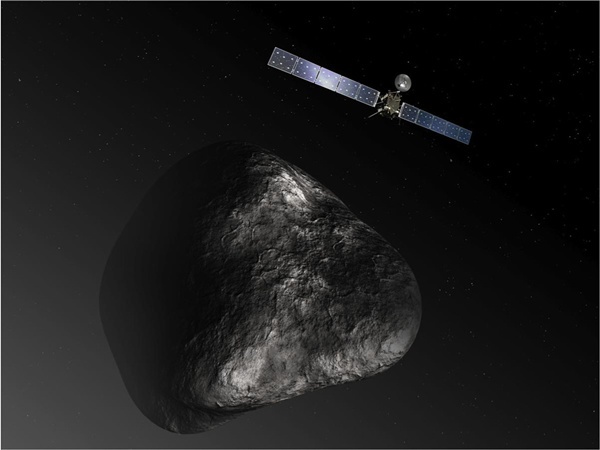Part of the scientific instruments of the Rosetta interplanetary station has entered the working mode

On Habré, the Rosetta interplanetary station mission to the comet Churyumov-Gerasimenko was written more than once. And each time it was news about the next success of the mission, for example, that the station was able to “wake up” after a long idle time.
Now is another good news. The fact is that part of the station’s scientific instrumentation has entered operational mode. Now they are monitoring the surrounding space with sending data to Earth. All this is a preparation for the study of the comet itself, which is still half a million kilometers and a couple of months to go.
')
Now Rosetta is located near the main asteroid belt, which is located between Jupiter and Mars. In total, there are 11 scientific instruments onboard the station, of which three have already begun to work.
This is an Alice UV spectrometer, a MIRO microwave device, and an IES sensor.
Alice is a system that will analyze the gas composition of a cloud of dust and gas surrounding the comet's core (this cloud has its own name - coma ). The composition of the gas coma can be judged on the composition of the nucleus of the comet. In addition, Alice will help determine the temperature of the solar system during the formation of the comet itself (approximately 4.6 billion years ago). This can be determined by the amount of argon in the coma.
The MIRO toolkit allows you to determine the formation of the comet's tail, as well as some parameters of the tail. Through such data, you can learn more about how the formation of the tail takes place as the comet approaches the Sun, as well as during its removal from the star.
And finally, the IES is a whole set of 5 tools that allows analyzing the plasma surrounding the comet, as well as analyzing the solar wind, the interaction of particles that make up the "wind" with gas emanating from the cometary nucleus.
In addition, it is worth remembering such a device as the Rosetta Orbiter Spectrometer for Ion and Neutral Analysis (ROSINA). This system allows us to distinguish molecular nitrogen and carbon monoxide, molecules with almost the same mass. And this, in turn, will help clarify the conditions for the formation of the solar system itself.
Via astronomy
Source: https://habr.com/ru/post/226111/
All Articles